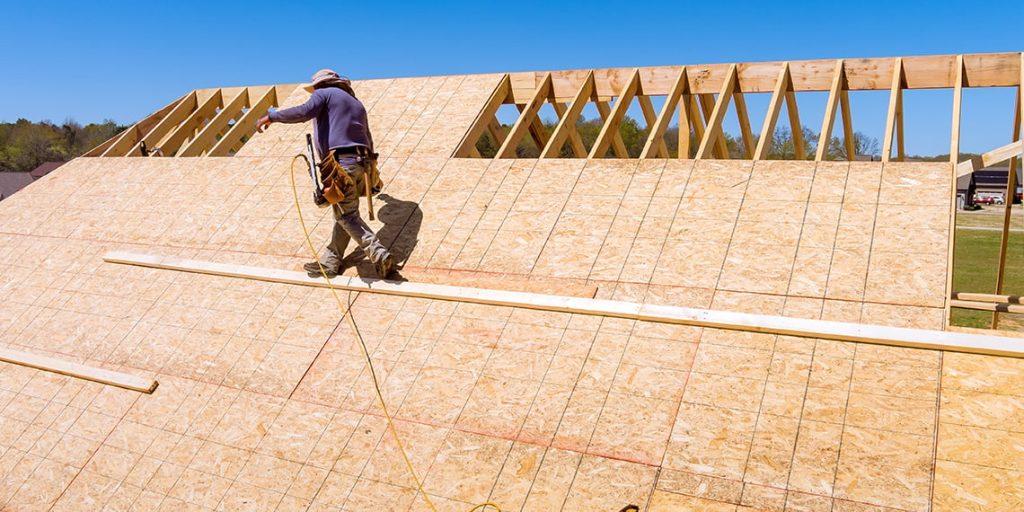When it comes to roofing materials, metal roofs have gained popularity for their durability, longevity, and aesthetic appeal. However, the success of a metal roof installation depends not only on the quality of the metal but also on the underlying sheathing material. One commonly used sheathing material is the 7/16 OSB (Oriented Strand Board). In this article, we will explore the benefits and considerations of installing a metal roof on 7/16 OSB. We will discuss the compatibility of these materials, the advantages they offer, and the important factors to consider for a successful and long-lasting metal roof installation.

Understanding 7/16 OSB:
7/16 OSB is a type of sheathing material commonly used in residential construction. It is made from wood strands or flakes that are bonded together with resin and compressed into panels. OSB offers strength, durability, and dimensional stability, making it a popular choice for roof decking.
Compatibility of Metal Roofing with 7/16 OSB:
Metal roofing is compatible with 7/16 OSB as long as the sheathing material meets the necessary requirements. Here are some key factors to consider:
- Structural Integrity: 7/16 OSB provides sufficient structural support for metal roofing. It offers stability and rigidity, ensuring the roof can withstand the weight of the metal panels and any external loads such as snow or wind.
- Moisture Resistance: Proper installation techniques and moisture management are crucial when using 7/16 OSB as the roof decking. It is essential to ensure that the OSB is adequately protected from moisture to prevent warping, swelling, or rotting.
- Fastener Holding Power: Metal roofs require fasteners to secure the panels to the roof decking. 7/16 OSB has good fastener holding power, allowing for secure attachment of the metal panels.
Advantages of Installing a Metal Roof on 7/16 OSB:
Strength and Durability: The combination of a metal roof and 7/16 OSB provides a strong and durable roofing system. Metal roofs are resistant to extreme weather conditions, such as high winds and heavy rain, while 7/16 OSB offers structural support and stability.
Longevity: Metal roofs are known for their longevity, often lasting 50 years or more. When installed on 7/16 OSB, the roof system can provide a long-lasting solution that requires minimal maintenance.
Energy Efficiency: Metal roofs are highly reflective, which helps to reduce heat transfer into the building. When combined with the insulating properties of 7/16 OSB, the roof system can contribute to improved energy efficiency and potential energy savings.
Considerations for a Successful Installation:
Proper Installation Techniques: It is essential to follow the manufacturer’s guidelines and industry best practices for both the metal roof and the 7/16 OSB installation. This includes proper fastening, sealing, and ensuring adequate ventilation to prevent moisture buildup.
Moisture Management: Implementing effective moisture management strategies, such as proper flashing and underlayment installation, is crucial to prevent water infiltration and potential damage to the 7/16 OSB.
Professional Installation: Hiring a professional roofing contractor experienced in installing metal roofs on 7/16 OSB is highly recommended. Their expertise ensures that the installation is done correctly, maximizing the longevity and performance of the roof system.
Conclusion:
Installing a metal roof on 7/16 OSB can provide a strong and reliable roofing solution. The compatibility and advantages of this combination make it a popular choice for residential roofing projects. By considering factors such as structural integrity, moisture resistance, and proper installation techniques, you can ensure a successful and long-lasting metal roof on 7/16 OSB. Consult with a qualified roofing professional to determine the best approach for your specific roofing needs and enjoy the benefits of a durable and aesthetically appealing metal roof.



Leave a Reply